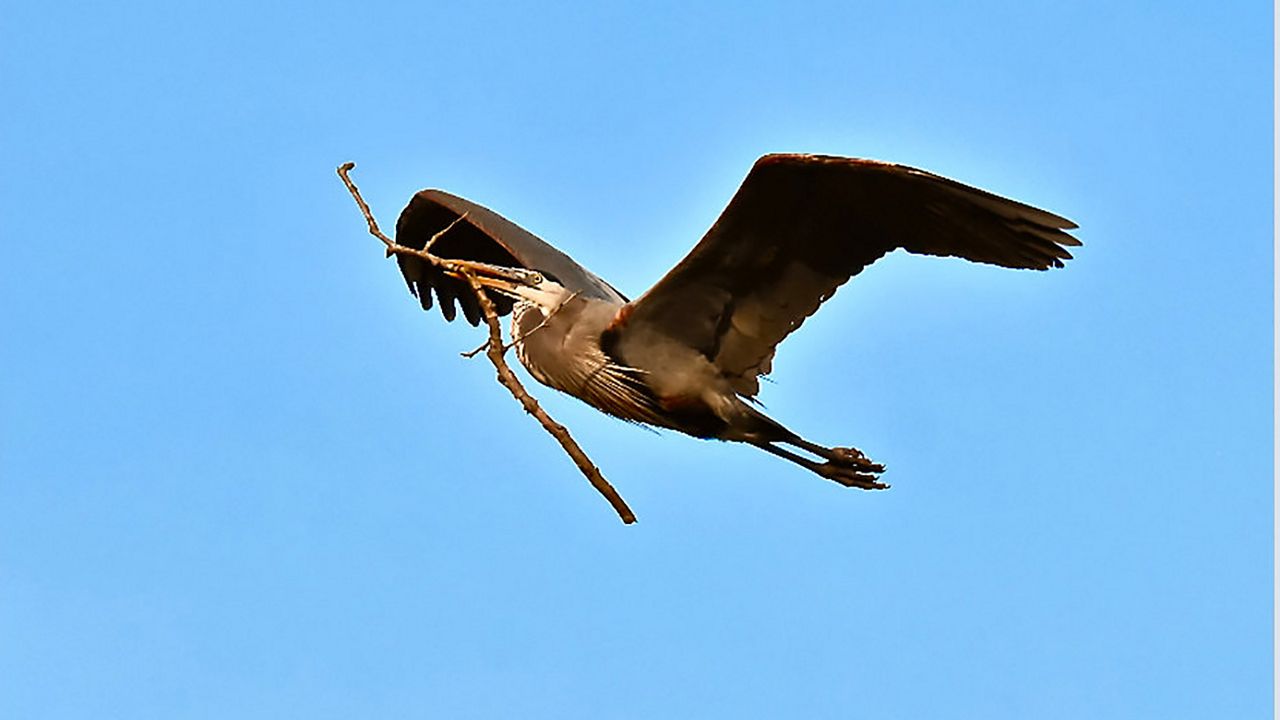CLEVELAND — Peg and Rob Bobel couldn’t say exactly how many years they’ve been studying the Great Blue Herons, but they know it’s been well over two decades.
“We make a list of every nest, when the birds start to incubate, (and) when the eggs start to hatch,” said Peg. "We count the chicks. We mark down everything that’s going on at this heronry.”
They spend their time volunteering for the Cuyahoga Valley National Park, home to a growing population of great blue herons.
“When they started to show up and really multiply that was a good indication that the river was getting cleaner and that the fish were coming back,” said Peg.
This is the time of year when the herons nest together in the trees, called heronries.
The National Park Service said there are two main heronries you can visit in Cuyahoga Valley: The Bath Road heronry located on Bath Road between Akron Peninsula and Riverside Roads, and the Piney Narrows heronry located on the west side of the Cuyahoga River.
The Bobels post up at the Bath Road heronry with their binoculars and notepads where they document the good and the bad.
“Two trees blew down just last November and another tree had gone down a few years ago. Whenever that happens, you lose all those nests and you lose that real estate that they would come back to,” said Peg.
Despite the loss of those trees, the Great Blue Herons were out tending to their nests and incubating their eggs, all while a group of onlookers watched from the busy road.
“So many people are attracted to them because they are large and easy to see,” Peg said. "People just get mesmerized by watching them.”



